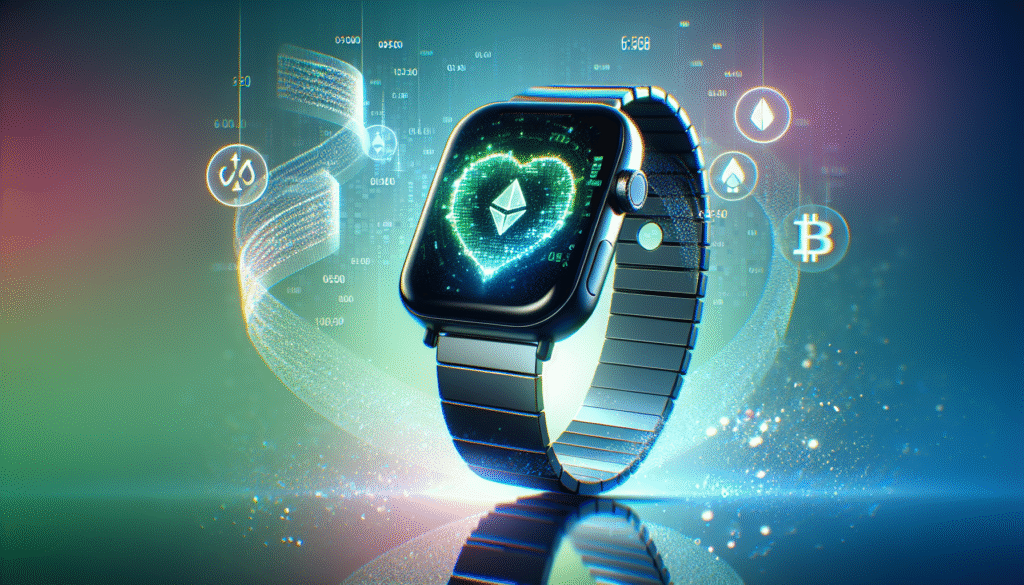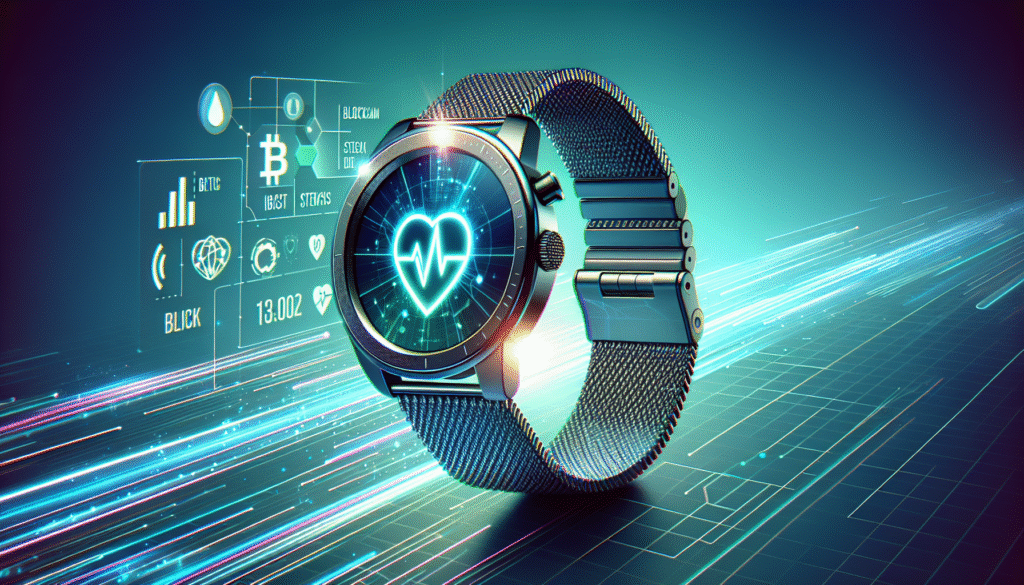Have you ever wondered how the intersection of blockchain and wearable health technology can transform the way you manage your health and wellness? While healthcare and blockchain might initially seem like two distinct realms, they increasingly converge in innovative ways. Let’s dive into how you can harness the power of cryptocurrency to enhance the utility and effectiveness of wearable health tech.

Understanding the Basics of Crypto and Wearable Health Tech
Before delving into the nuances of using crypto with wearable health devices, it’s essential to understand the fundamentals of both fields. In this section, I’ll guide you through the core concepts.
What is Cryptocurrency?
Cryptocurrency is a digital or virtual currency secured by cryptography, ensuring secure transactions and controlling the creation of new units. Unlike traditional currencies, cryptocurrencies operate on decentralized networks based on blockchain technology. They promise increased transparency, security, and accessibility, which make them appealing for many industries, including healthcare.
Wearable Health Technology Explained
Wearable health technology includes devices and applications designed to collect data on personal health and fitness. Devices like smartwatches, fitness bands, and health monitors track metrics such as heart rate, steps taken, and sleep patterns. This data provides insightful information for managing personal health and can be particularly beneficial when shared with healthcare providers.
How Do These Two Worlds Intersect?
The synergy between blockchain and wearable health tech lies in the secure and decentralized handling of health data. Crypto can facilitate efficient data management and streamline health transactions, offering privacy and ownership to the user. Blockchain ensures that once data is recorded, it cannot be modified, providing reliability to healthcare stakeholders.
Benefits of Using Crypto in Wearable Health Tech
You may wonder, “Why incorporate blockchain into wearable health tech?” Let’s explore the symbiotic benefits that arise from this fusion.
Enhanced Data Security and Privacy
One of the most compelling reasons for using crypto in wearable health technology is the enhanced security and privacy it provides. By using blockchain technology, your health data is encrypted and stored in a decentralized network, making it difficult for hackers to access or tamper with your information.
Ownership and Control Over Your Data
Blockchain enables you to control your health data without intermediaries. You decide who gets to access it and how it’s used. This empowerment contrasts sharply with traditional health data practices, where tech companies and healthcare providers often control your data.
Efficient and Safe Transactions
Transactions using cryptocurrency are fast and secure. This can be vital for wearable health tech when paying for services or products related to your health. Crypto transactions eliminate third-party involvement, reducing fees and processing times.
Using Crypto to Purchase Wearable Health Devices
Imagine being able to purchase your next health-monitoring gadget using cryptocurrency. Here’s how you can do that and why it might be beneficial.
Selecting the Right Platform
Several online platforms accept cryptocurrency as a legitimate form of payment for wearable health devices. Platforms like Overstock and Newegg offer a range of health tech gadgets accessible with crypto payments. Ensure that the platform you choose has good reviews and a secure payment system.
Benefits of Paying with Crypto
Paying for wearables with crypto can offer several advantages. Crypto payments are generally lower in transaction fees compared to credit cards or bank transfers. In addition, paying with crypto can offer greater privacy, as these transactions do not require personal identifying information, unlike traditional banking methods.
Steps for Making a Purchase
To make a purchase using cryptocurrency, follow these steps:
- Register a Wallet: Ensure you have a cryptocurrency wallet with sufficient funds.
- Select and Confirm Your Product: Choose the wearable tech device you’re interested in and add it to your cart.
- Select Crypto Payment Option: On checkout, select the option to pay with cryptocurrency.
- Authorize the Transaction: Follow the platform’s instructions to complete the payment through your crypto wallet.
Storing and Securing Your Health Data with Blockchain
Harnessing blockchain for storing your health data enhances its security and accessibility. Let’s look at how this works and why you might choose this option.
Why Store Health Data on Blockchain?
Blockchain’s decentralized nature ensures that your health data is stored securely, preventing unauthorized access. Moreover, the immutability of blockchain means that once data is recorded, it cannot be altered, ensuring its reliability for you and your healthcare providers.
Steps to Store Your Data
Storing your wearable tech data on blockchain can seem daunting, but here’s a simplified approach:
- Choose a Compatible Device or App: Ensure your wearable device or associated app can integrate with blockchain technology.
- Select a Reliable Blockchain Service: Opt for a service that specializes in secure health data storage. Platforms like MediBloc and Patientory offer such services.
- Sync Your Data: Follow instructions provided by the service to sync your wearable device’s data to the blockchain.
Considerations and Challenges
Though blockchain offers numerous benefits, consider potential challenges. It’s vital to ensure that the platform you choose complies with healthcare regulations like HIPAA. Additionally, always weigh the network’s scalability, as some blockchains might be limited in handling large volumes of data.

The Role of Smart Contracts in Wearable Health Tech
A fascinating aspect of merging blockchain with wearable health tech is the use of smart contracts. Let’s explore how these can be a game-changer.
What are Smart Contracts?
Smart contracts are self-executing contracts with the terms of the agreement directly written into code. They facilitate, verify, and enforce the performance of a contract automatically, minimizing the need for intermediaries.
Applications in Health Monitoring
In wearable health tech, smart contracts can automate several processes. For instance, they can trigger automatic alerts to healthcare providers when certain health parameters reach critical levels. This can lead to timely medical interventions, enhancing personal safety and care.
How to Use Them
To utilize smart contracts, ensure your wearable device or its platform supports blockchain integration. Work with developers or choose existing solutions that allow you to set health conditions and corresponding actions your smart contract can manage.
Ethical and Legal Considerations
Technology integration often brings ethical and legal questions, especially concerning something as sensitive as health data. Here’s what you should consider.
Privacy Concerns
Even with blockchain’s security, privacy remains a valid concern. It is crucial to understand how data is managed and who retains the right to access it. Stay informed about your rights and the terms and policies of the technology you use.
Compliance with Health Regulations
Ensure that tech solutions comply with applicable regulations such as the GDPR and HIPAA. These regulations are in place to protect user data, mandate transparency, and ensure proper user consent for data use.
Future Implications
Think about the long-term implications of storing your health data on blockchain. As technology evolves, consider how this could affect your data privacy and how future legal landscapes might influence the use of such technologies.
Challenges in Merging Crypto with Wearable Health Tech
Combining two advanced technologies presents its own set of challenges. Let’s discuss some potential obstacles you might face and how to navigate them.
Technological Barriers
Different platforms have varying levels of blockchain integration, which can become a sticking point. Ensure compatibility between your wearable health technology and blockchain services to leverage their full benefits.
Adoption and Resistance
Not everyone is aware or accepting of using crypto and blockchain in healthcare. Widespread adoption may take time, influenced by user education and trust in the system’s security.
Economic and Resource Constraints
Implementing blockchain technology can incur costs and require significant computing resources. Evaluate the cost-effectiveness relative to your needs and available budget for health management solutions.
Future Trends: What to Expect
Looking forward, the fusion of blockchain and wearable health technology promises exciting advancements. Here’s what you might expect down the road.
Increased Personalization
AI and blockchain combined could offer highly personalized healthcare experiences, fully leveraging data from wearable devices. This can mean not only smart health management but also predictive health interventions.
Wider Acceptance and Use
As more healthcare providers and tech developers recognize the potential benefits, expect wider adoption of blockchain solutions in health management. This may mean increased options for you, with better services and more secure data practices.
Evolving Regulations
Anticipate shifts in regulatory landscapes aimed at accommodating and overseeing the emerging blockchain solutions in healthcare. Keeping abreast of such changes will be crucial.
Advancements in Smart Wearable Devices
Wearable devices are set to become even more sophisticated, offering deeper insights into your health and enabling more complex smart contract applications for proactive health management.
Conclusion
Integrating cryptocurrency with wearable health technology opens up a world of possibilities for more secure, personalized, and efficient health management. While the journey may include challenges, staying informed and prepared can help you adapt and benefit from these technological innovations. As you continue exploring these advancements, you stand at the forefront of a digital health revolution that can empower your health decisions more than ever before.
Navigating this new landscape requires curiosity, caution, and a willingness to adopt new practices. Yet, as with many technological intersecting innovations, the potential rewards – in terms of better health and improved quality of life – are likely to be well worth the effort.

